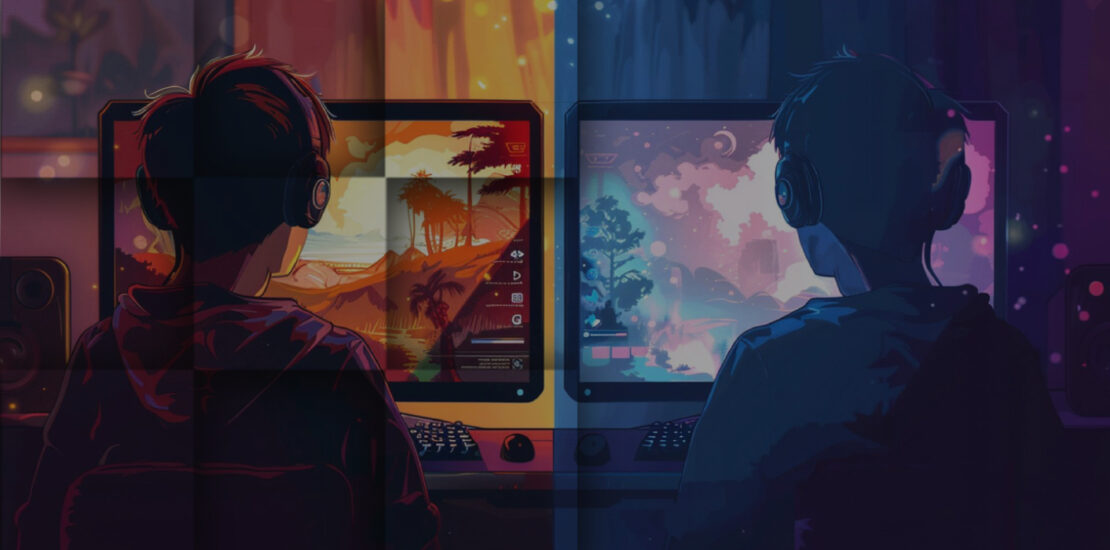- September 17, 2024
- Posted by: Sheela Miller
- Category: Game Development

Animation has long been a cornerstone of the gaming industry, breathing life into characters and worlds that captivate players. However, the choice between 2D and 3D animation styles has a profound impact on how games are experienced. Understanding the differences between these two animation styles is crucial for game developers, artists, and players alike.
Contents
The Basics: What is 2D and 3D Animation?
2D Animation involves creating images in two dimensions, where characters and objects are drawn frame by frame to create movement. It’s vector-based, which means each element is composed of lines and shapes. This style typically relies on traditional hand-drawing techniques or software like Adobe Animate. The flat, linear perspective is ideal for games that prioritize stylized, illustrative aesthetics. Think of classic platformers like Super Mario or Cuphead where 2D animation is utilized to create rich, vibrant worlds.
3D Animation, on the other hand, builds models in a three-dimensional space. These models can be viewed from any angle, giving them a more realistic and dynamic presence. This style requires a deep understanding of physics, motion, and lighting to create life-like movements and environments. Software like Blender or Maya is commonly used to develop 3D animations. Modern games like The Last of Us and Assassin’s Creed showcase how 3D animation can create immersive, lifelike experiences.

Key Differences Between 2D and 3D Animation
1. Visual Aesthetics:
2D Animation: Flat, with an emphasis on stylistic choices and artistic interpretation. Characters and backgrounds have a more cartoonish and illustrative quality, which can range from simple and whimsical to highly detailed and complex.
3D Animation: Provides depth, realism, and a sense of volume. Characters and objects can be rendered with intricate details, shadows, and lighting effects, giving them a tangible, lifelike quality.
2. Complexity and Production Time:
2D Animation: Generally, requires a shorter production time and is often less expensive to produce. It’s ideal for projects where stylistic expression and creativity take precedence over realism.
3D Animation: More complex and time-consuming, often requiring larger teams and longer production schedules. However, the payoff is in the ability to create more immersive and realistic environments.
3. Application in Gaming:
2D Games: Typically used in genres like platformers, strategy games, and mobile games where simplicity and stylistic consistency are key. Examples include Hollow Knight and Stardew Valley.
3D Games: Dominates genres like action-adventure, shooters, and simulations, where a realistic portrayal of characters and environments enhances the gaming experience. Games like Cyberpunk 2077 and Red Dead Redemption 2 are prime examples.
The Pros and Cons
2D Animation:
Pros:
- Easier and faster to produce.
- Cost-effective.
- Offers creative flexibility with artistic styles.
Cons:
- Lacks depth and realism.
- May appear outdated or simplistic in comparison to 3D.
3D Animation:
Pros:
- Realistic, immersive experiences.
- Dynamic camera movements and angles.
- Greater potential for innovation in gameplay.
Cons:
- Requires more resources, time, and expertise.
- Higher costs associated with production.

Example Games
2D Example: Cuphead
Cuphead is a perfect example of how 2D animation can be used to create a unique and engaging gaming experience. The game features hand-drawn animations inspired by 1930s cartoons, offering a nostalgic and visually stunning experience. The 2D style complements its fast-paced, side-scrolling gameplay, making it a standout title in the indie game scene.
3D Example: The Last of Us Part II
In contrast, The Last of Us Part II utilizes 3D animation to craft a deeply immersive and emotionally charged experience. The game’s detailed character models, realistic environments, and sophisticated motion capture techniques create a world that feels alive and responsive, drawing players into its narrative on a visceral level.
Conclusion: Choosing the Right Style for Your Game
When deciding between 2D and 3D animation for a game, it’s essential to consider the game’s genre, target audience, and the resources available. While 2D animation offers creative freedom and is cost-effective, 3D animation brings unparalleled realism and depth. Both styles have their own unique advantages and can deliver outstanding gaming experiences when used thoughtfully.
Whether you’re aiming to create a nostalgic, stylized platformer or a cutting-edge, realistic open-world adventure, understanding the strengths and limitations of 2D and 3D animation will guide you in making the best choice for your game.
At iXie, we specialize in delivering high-quality game art and animation that brings your creative vision to life. Explore our game development and game art production services to see how we can help you achieve your goals.
Frequently Asked Questions:
2D animation involves creating images in a flat, two-dimensional space, often using traditional hand-drawing techniques or vector-based software. It’s ideal for stylized and illustrative game aesthetics. In contrast, 3D animation builds models in a three-dimensional space, allowing for realistic, dynamic perspectives and lifelike movements. This style requires a deep understanding of physics, lighting, and motion.
2D animation is generally more cost-effective and quicker to produce than 3D animation. It requires less complex software and fewer resources, making it ideal for projects where stylistic expression and creativity are more important than realism.
Notable examples of games that utilize 2D animation include Cuphead, which features hand-drawn animations inspired by 1930s cartoons, and Hollow Knight, known for its rich, illustrative world and detailed character designs.
Certainly! The Last of Us Part II is a prime example of 3D animation, offering a highly immersive and realistic gaming experience with detailed character models and environments. Assassin’s Creed is another example, known for its dynamic 3D worlds and lifelike movements.
2D animation tends to offer a more stylistic and artistic approach, often enhancing games that focus on visual creativity and simplicity. In contrast, 3D animation provides a more immersive and realistic experience, suitable for games that require depth, complex environments, and dynamic camera movements.
